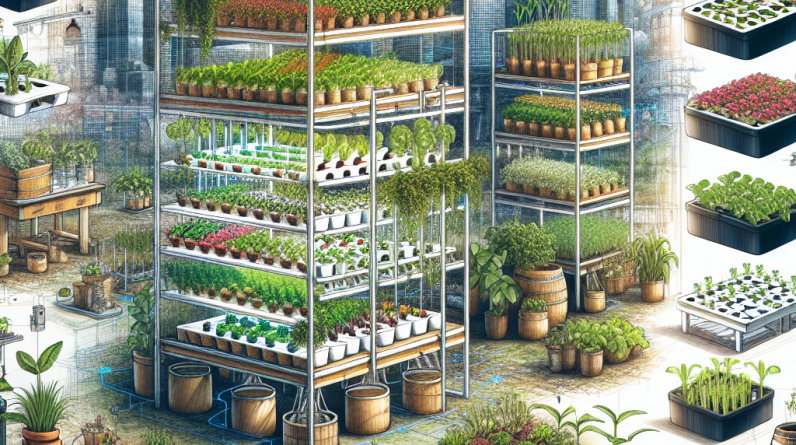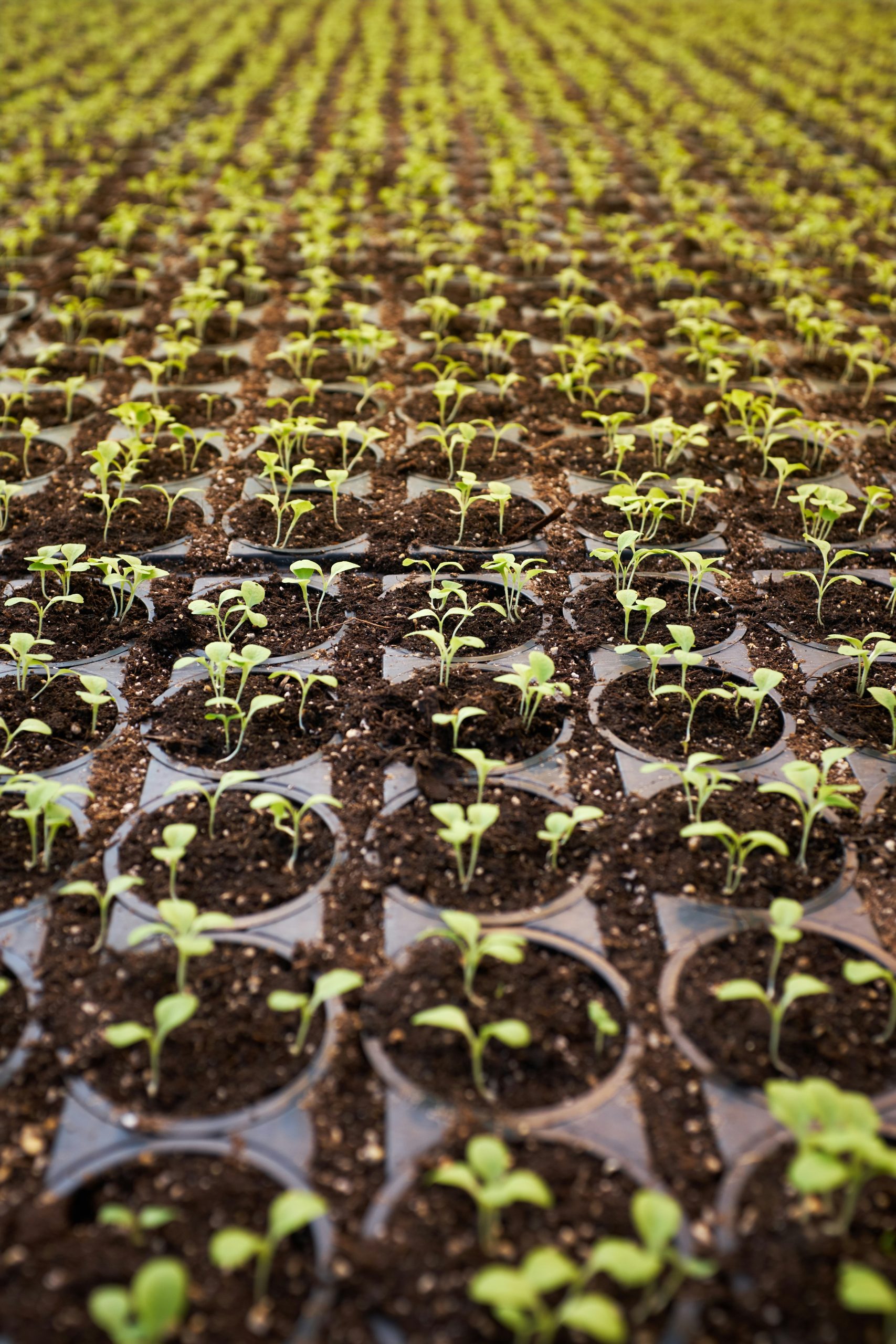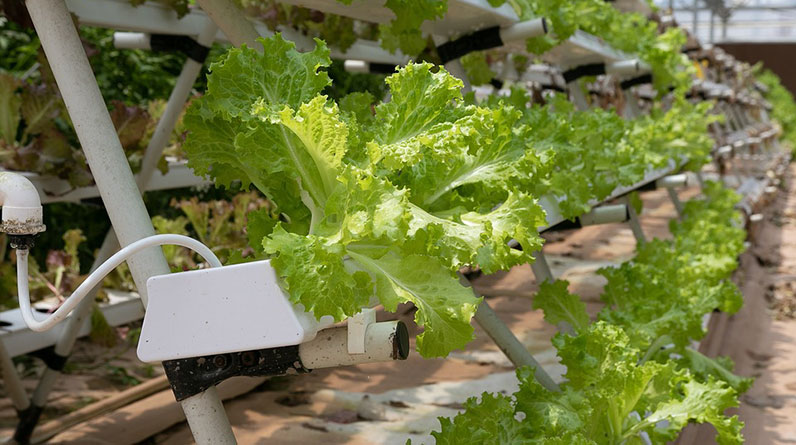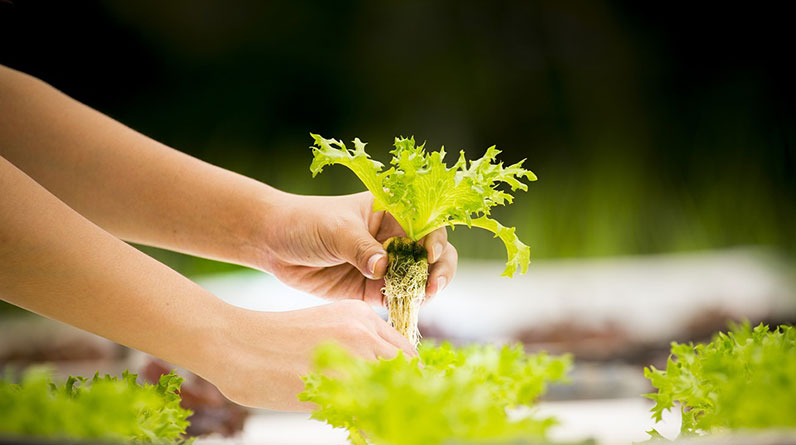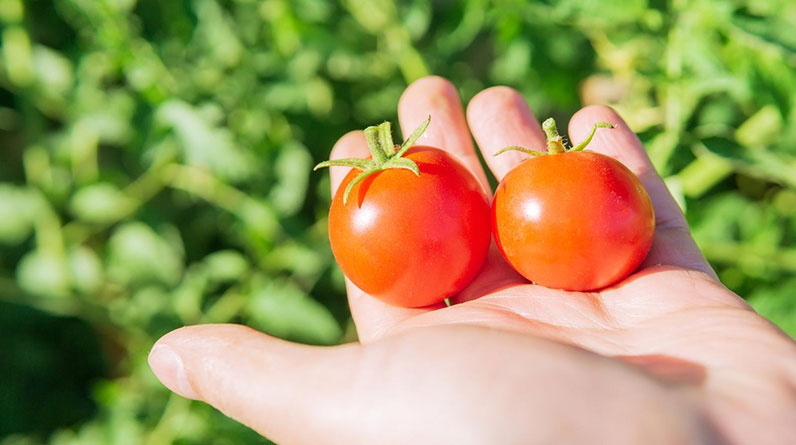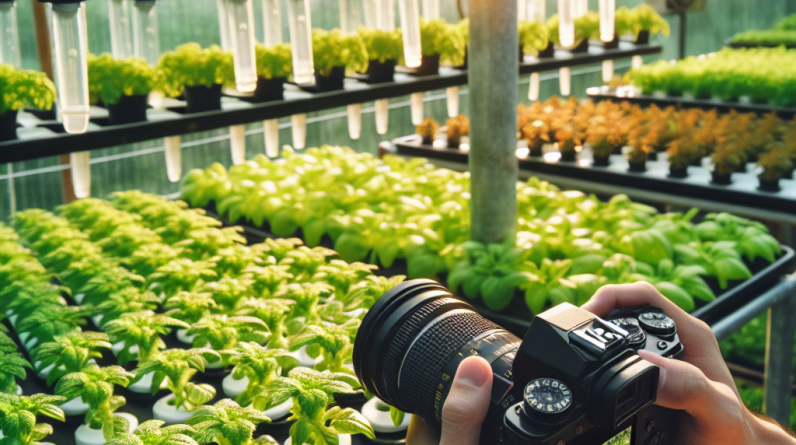
Understanding Hydroponics: A New Way to Grow
What is Hydroponics?
So, I was pretty curious if there was more to growing plants than digging in dirt—and boy, was I right! Hydroponics is this revolutionary method where you grow plants without soil. Yep, you heard that right. Instead, plants are fed through nutrient-rich water. It’s not just a trend; it’s a game-changer for urban gardening and beyond.
With hydroponics, you’re essentially giving plants everything they need—nutrients, water, light, and love—without the fuss of soil. I remember my first attempt; I was like a kid in a candy store! Excited, a bit nervous, but absolutely sure I wanted to explore this magical world.
This method is also super eco-friendly and sustainable. Using less water than traditional soil gardening and eliminating the need for harmful pesticides, hydroponics is not only fantastic for your plants but also for Mother Earth. That’s a win-win in my book!
How Does Hydroponics Work?
Okay, so here’s the fun part. Hydroponics works by delivering essential nutrients directly to the plant’s roots in a water solution. This means quicker growth and bigger yields. In my experience, I’ve seen plants go from seedlings to harvest-ready in record time, and that’s just mind-blowing!
There are various systems out there, like wick systems, nutrient film techniques, or deep water culture—read about them and see what tickles your fancy. I personally started with a simple deep water culture system, and it was a blast setting it up and watching those roots grow happily in the water!
Understanding how hydroponics functions is crucial. The balance of pH, nutrient concentration, and oxygen levels are vital. It might sound a bit science-y, but trust me, once you wrap your head around these concepts, you’ll feel like a plant wizard.
The Benefits of Hydroponic Gardening
Let’s talk perks! One of the best things about hydroponics is the sheer speed of growth. You’ll notice your plants thriving faster than traditional growing methods. I was amazed when I harvested my first batch of herbs in just a few weeks—there’s a satisfaction that comes with that!
Another highlight has to be the space-saving aspect. If you’re tight on space, hydroponics can work wonders. You can stack systems vertically or use grow towers. It’s perfect for apartments or small yards. My balcony went from being a dull space to a vibrant green oasis!
Then there’s the flexibility. You can grow different plants in any season—yes, even when it’s snowing outside. This way, you can keep those salad greens coming all year round! How cool is that? I simply love the idea of fresh produce without having to trek to the grocery store.
Choosing the Right Hydroponic System
Assessing Your Space
When I first started with hydroponics, I didn’t consider how my available space would impact my setup. Take some time to evaluate your area. Is it bright enough? What about access to water? Making sure you choose a system that fits your space is crucial for success.
For my first garden, I went with a small countertop system that fit perfectly in my kitchen. I didn’t realize it would also serve as a gorgeous decoration! After experimenting a bit, I moved up to a larger vertical system that allows me to maximize every inch of my balcony. I love embracing every square foot.
So, explore your space; take measurements and visualize where you want that hydroponic beauty to thrive. It makes a world of difference in the long run!
Understanding Different Systems
Once you know your space, it’s time to dive into the types of hydroponic systems. I started with a simple Kratky method which is super beginner-friendly. If you’re into DIY, you can even make your own system with a few supplies!
Each type has its advantages—some are low-maintenance, while others are more hands-on. The aeroponic system, for instance, is a fascinating way where roots hang in the air while being misted with a nutrient solution. Talk about high-tech gardening!
I encourage you to research these systems a bit before buying anything. Find what gears you up and what fits your lifestyle. Trust me, getting to know the different setups makes the journey even more interesting!
Budgeting Your Hydroponic Setup
Let’s keep it real—getting started in hydroponics can be a little pricey. I had no clue how quickly expenses added up! So, sit down and crunch some numbers about what you’re willing to spend. You can find everything from basic systems to fancy integrated setups.
I found that starting small with a DIY setup was manageable for my budget. Over time, once I saw thriving plants and enjoyed the process, I started investing in better systems. Remember that investing in quality equipment will pay off in the long run. Better systems equate to happier plants!
Lastly, don’t forget to factor in ongoing costs like nutrients, water, and seeds into your budget. Having everything written down on a sheet helps me visualize and keeps me on track. Budgeting is essential in this journey!
Maintaining Your Hydroponic Garden
Nutrient Management
Alright, time to talk about nutrients because they’re the lifeblood of hydroponics. Keeping track of your nutrient levels is vital—too little or too much can stress your plants. I remember overshooting the nutrient dosage once, and let me tell you, my plants were not happy with that!
It’s important to check and balance the pH and nutrient concentration regularly. I like to set an alert on my phone to remind me; consistency is key. With practice, it becomes second nature, and soon you’ll feel like a plant nutritionist!
Experiment a little; some plants thrive with more nutrients while others prefer a lighter touch. Over time, you’ll learn what works for your green friends, and it’s rewarding to see them react positively to your care!
Light and Environmental Control
One thing that blew my mind was how much light affects growth. I initially thought any sunlight would do the trick, but nope. The right light spectrum is key to healthy plants. I eventually invested in some LED grow lights that gave me the ability to control lighting better than ever before.
Figuring out how to set up your light cycles can feel like science, but it’s really just about mimicking nature. My plants absolutely thrived under controlled environments. I also got to experiment with different settings to see what worked best for each plant type. So much fun!
Don’t skimp on airflow either. Proper air circulation keeps your plants happy and healthy. The last thing you want is fungi attacking your beautiful greens—yikes. Keeping my windows ventilated and adding fans made a huge difference.
Pest Management
Pest problems are real, and I quickly learned that hydroponic systems aren’t immune. Further down my journey, I found aphids sneaking around my plants, and I had a mini freak-out moment. But fear not! There are solutions.
First off, prevention is your best friend. Regularly checking your plants, keeping the area clean, and being quick to act can save you headaches. I started incorporating beneficial insects into my system, and it’s been like having little superhero allies!
Also, remember that less is more when it comes to chemical pesticides, especially in hydroponics. I went for more natural options, like neem oil, which worked well to keep pests at bay without compromising the health of my beloved plants.
Harvesting and Enjoying Your Hydroponic Produce
Knowing When to Harvest
Harvesting is the cherry on top of your hydroponic journey. The first time I harvested lettuce from my setup, I felt an overwhelming sense of pride. There’s something special about plucking fresh greens that you’ve nurtured!
Getting the timing right is crucial. Certain leafy greens can be harvested more frequently while fruiting plants like tomatoes might take a little longer. I’ve learned to research my specific plants for the best timeframes to ensure peak freshness—because who wants sad, overgrown veggies, right?
Don’t forget, harvesting isn’t just about picking; it’s about using the right techniques that won’t stress the plant too much. I’ve learned to use clean scissors for a quick cut, and this makes a world of difference in keeping everything tidy and happy!
Storing Your Harvest
So, you’ve harvested a whole bunch of goodies—now what? Proper storage is key to maintaining freshness. I’ve had mixed results before; I once put some fresh basil in the fridge without water. Bad move—let’s just say it was a soggy disaster!
Fresh greens do need a little love, so I’ve learned to wrap them in damp paper towels and store them in a container. For herbs, a glass of water on the counter can work magic. These little tricks will keep your harvest fresh longer and ensure you get to enjoy every last bite!
Also, be sure to preserve your bounty if you have lots. Drying, freezing, or even making pesto can save you from having everything go bad. Embrace the creativity that comes with fresh produce—there’s so much fun to be had!
Sharing Your Hydroponic Success
Finally, once you’ve mastered your hydroponic garden, don’t keep your success to yourself! Sharing your journey can inspire others to jump on the green-fingered bandwagon as well. I started taking pictures of my progress and posting them online, and it was unreal to see how many people were curious.
Join local communities or social media groups focused on hydroponics. You’ll find a wealth of expertise and camaraderie that makes the whole experience even more enjoyable. Plus, you can swap tips, challenges, and successes—trust me, it feels great to connect!
In the end, everything you’ve learned can also find its way into the kitchen. Share meals with friends and family made from your homegrown produce. There’s nothing quite like sexy fresh salads or fragrant herbs, and you get to brag about how you grew them yourself!
FAQ
1. What is hydroponics?
Hydroponics is a method of growing plants without soil, using nutrient-rich water instead. It allows for faster growth and is more sustainable and eco-friendly than traditional soil gardening.
2. How do I choose the right hydroponic system?
Assess your space, determine your budget, and research various hydroponic systems available. Consider starting with a simple, beginner-friendly option before investing in more complex setups.
3. What are the key considerations for maintaining a hydroponic garden?
Key considerations include nutrient management, ensuring appropriate light and environmental controls, and being proactive about pest management.
4. How do I know when to harvest my plants?
Timing for harvesting depends on the type of plant; leafy greens can be harvested frequently, while fruiting plants like tomatoes take longer. Research your specific plants for optimal harvest time.
5. Can I store my hydroponically grown produce?
Yes, proper storage is key. Use damp paper towels for greens, and consider water jars for herbs. You can also dry or freeze your harvest for long-term storage.
Related Content
- 10 Powerful Hydroponic Herb Garden Strategies for 2025: The Ultimate Guide
- Sustainable Agriculture with Hydroponic Growing
- How to Grow Hydroponic Kale for Nutrient-Dense Greens
- How to Use Hydroponics for Sustainable Food Production
- The Ultimate Guide to the Best Hydroponic Lights in 2025 for Thriving Growth



